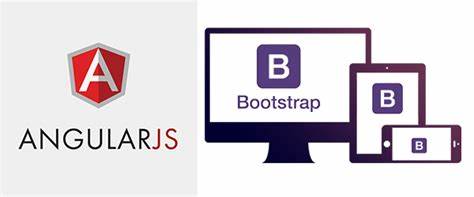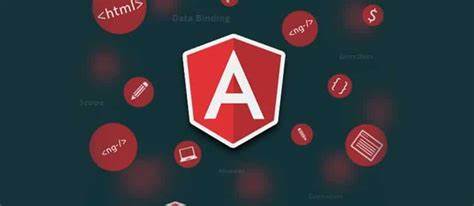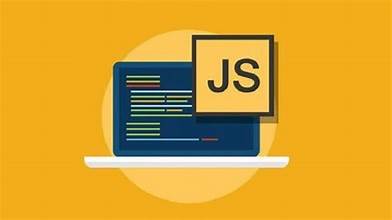Introduction
Angular and JavaScript Frameworks
- Processes and modules used in Angular to create web applications
Designing Web Applications with Bootstrap
- Processes and modules used in Boostrap to style web applications
Overview of the Front-End Development Cycle
- Front-end versus back-end
- JavaScript/TypeScript logic, CSS templates, and HTML templates
Preparing the Development Environment
- Installing and Configuring Angular CLI
- Creating a new Angular application
- Organizing folders and directories
- Setting up and managing a version control system (GitHub, GitLab, etc.)
Developing the Application
- Running the new Angular application on a development server
- Generating components with Angular CLI
Styling the Application
- Installing and configuring Bootstrap
- Installing and configuring a font and icon toolkit based on CSS
- Importing components to the specific route location as an object
- Creating presentation templates using Bootstrap elements
- Generating the UiModule in the application
- Implementing app components
- Implementing Navbar components
Testing the Application
- Automating browser refreshing after code changes
- Running Ng serve to find code errors
Deploying the Application
- Managing the Angular application on a localhost server
Securing the Application
Troubleshooting
Summary and Conclusion
Introduction
What is Angular?
The process of creating single-page applications on Angular
- Stateful vs. stateless
- The evolution of Angular
Overview of MEAN Stack
- The components of the MEAN Stacks
- Front-end vs. back-end
Implementing a MEAN Stack Web Application
- Data storage, servers, and APIs
Preparing the Front-End
- Configuring Angular CLI
- Creating components
- Creating a client-side route
Preparing the Back-end
- Installing and configuring Express JS and NodeJS
- Integrating Mongo DB with Express JS and Node JS
Implementing Application Functionality
- Understanding how loop backs work
- Implementing REST APIs
- Carrying out CRUD (create-read-update-delete) operations
Running the Application
- Processing user queries
- Responding to queries
- Interacting with users
Deploying the Application to Production
Troubleshooting
Summary and Conclusion
Introduction
Front-End Development and JavaScript Frameworks
- The tools and development for web development
Evaluating Application Requirements
- Speed and performance
- Maintainability
- Readability
- Integration with existing systems, applications and services
Evaluating Existing Talent
- Backend and frontend development experience
- Training and learning curves
Preparing the Development Environment
- Editors and IDEs
- Installing and configuring NPM and Node.js
Overview of the Web Development Cycle
- Version control, coding, building, testing, deploying
- Automation and continous integration
Exploring Angular
- Benefits: reusabilty, readability, maintainability, etc.
- Limitations: steep learning curve, migrating legacy
- Hands on: installing and configuring
- Hands on: implementing a todo list app
- Hands on: testing and debugging todo list app
- Building and deploying an Angular application
Exploring React
- Benefits: data binding, JSX, SEO-friendly, etc.
- Limitations: learning curve, JSX, React’s documentation, etc.
- Hands on: installing and configuring
- Hands on: implementing a todo list app
- Hands on: testing and debugging todo list app
- Building and deploying a React application
Exploring Vue
- Benefits: size, readability, etc.
- Limitations: lack of plugins, updated continuously, etc.
- Hands on: installing and configuring
- Hands on: implementing a todo list app
- Hands on: testing and debugging todo list app
- Building and deploying a Vue application
Summary and Conclusion
Introduction
- Overview of Angular
- Understanding the Angular framework and architecture
- Understanding the anatomy of an Angular application
- What’s new in Angular 13?
Fundamentals of TypeScript
- Understanding the TypeScript syntax
- Defining variables and arrays
- Type in functions
Building Components
- Overview of components
- Creating a component using Angular CLI
- Understanding the component class
- Using a component template
- Event Binding
Working with Angular Forms
- Introduction to forms
- Using template-driven forms
- Importing forms module
- Setting up a form
- Overview of reactive forms
- Importing reactive forms module
- Constructing a form
- Designing the template
Services, Dependency Injection, and Pipes
- Overview of service
- Creating a basic service
- Understanding service class
- Introduction to dependency injection
- Injecting a service instance
- Introduction to pipes
- Using built-in pipes
- Using pipes in HTML template
- Chaining pipes
Working with HTTP Client
- Angular HTTP client
- Using the HHTP client
- Importing HTTP client module
- HTTP client request options
- Returning an HTTP response object
- Setting request headers
- Creating a new and simple observable
Angular Component Router
- Introduction to the Angular component router
- Navigating view
- Using the Angular router API
- Creating a router-enabled application
- Hosting router components
Implementing Micro-Frontend Architecture with Angular
- Overview of micro-frontend
- Advantages and features of micro-frontend
- Understanding the different approaches to micro-frontend
- Understanding the micro-frontend framework
- Creating micro-frontend projects with Angular
Testing Angular Applications
- Unit testing Angular artifacts
- Using testing tools
- Testing steps
Summary and Next Steps
Introduction
- Overview of HTML5, JavaScript, and CSS4
- Understanding HTML5, JavaScript, and CSS4 features and architecture
Getting Started
- Setting up the development environment
Working with HTML5
- Understanding the basics of HTML5
- Using text formatting tools
- Links and nested links
- Working with lists, images, and tables
- Creating forms
- Grouping elements
- Using HTML5 tags
Building a website
- Understanding the website structure
- Developing the User Interface
- Capturing and storing data
Working with CSS4
- Understanding the basics of CSS
- Inline CSS
- Internal and external CSS
- Targeting elements in CSS
- Designing and animation with CSS4
Fundamentals of JavaScript
- Understanding the basics of JavaScript
- Working with data types
Advanced JavaScript Concepts
- Object Oriented Programming (OOP) vs. Functional Programming (FP)
- Understanding asynchronous JavaScript
- Using modules in JavaScript
- Using extensions of built-in objects
- Reflect API and proxy API
- Error handling in JavaScript
Testing and Extending the Application
- Preparing test environment
- Fixing bugs and errors
- Debugging the application
- Adding advance graphics
- Application support and optimization
Deploying the Application
- Choosing a host platform
- After deployment monitoring
- Modifying the application in production
Troubleshooting
Summary and Next Steps



